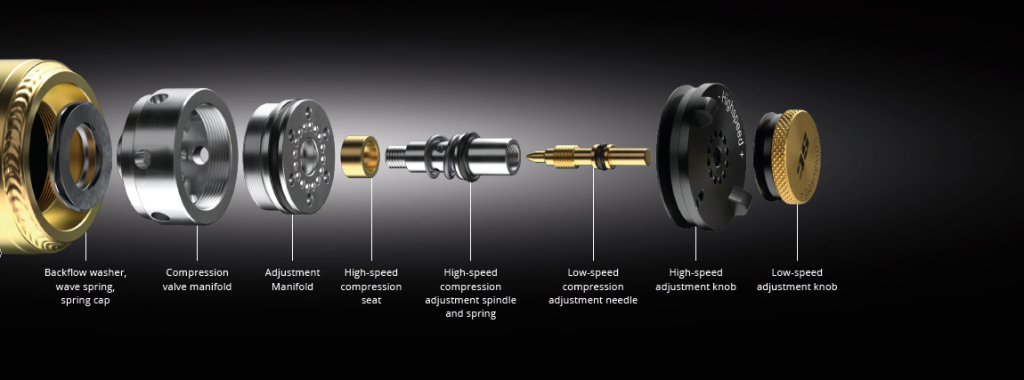
The subject of suspensions and coilovers is very complex and therefore there are many “lowering myths” associated with this popular performance accessory. For example, if you follow various automotive forums or take the trouble to read through the comments of followers on one or two car-related YouTube videos, you will repeatedly come across some shocking ignorance.

Some people will argue that adjustable dampers and suspensions are only for motorsport use and have no place on the road, so to speak.

Unfortunately, it’s not all that simple, since in many motorsport classes, the regulations do not allow the use of dampers with adjustable damping forces at all.

In comparison, suspensions with adjustable dampers are even used in production vehicles, and we are not talking about electronic “Audi Magnetic Ride”, “BMW EDC” or “VW DCC” OEM suspension.

Even limited edition vehicle models such as the BMW M4 GTS, Ford Fiesta ST Edition, Ford Focus ST Edition or Mercedes-Benz C 63 AMG Black Series roll off the production line with 2-way and in some cases even 3-way adjustable shock absorbers – and none of these sporty vehicles are racing cars.
That’s why we rely on multi-valve technology for our KW and ST coilovers

In simple terms, suspension that has adjustable dampers makes driving easier. Because in modern coilovers, such as our new ST XTA plus 3 coilover suspension with parts certificate, we break down our experience in developing adjustable motorsport dampers for everyday road use.

A suspension with 3-way adjustable dampers gives us much more freedom in the entire suspension development process to find the best possible compromise for our customers.

After all, the main task of a suspension is and remains to stabilise the body structure and, in interaction with the tires, to provide traction in each driving situation.

While the suspension springs basically support the body and store the “impact energy” applied to the car during compression and convert it into vibrations, the shock absorbers (vibration dampers) control the spring and reduce the vibrations. This kinetic energy is converted into thermal energy (heat) by the damper.

Decades ago, people were mainly working with linear or progressive spring rates and special spring steel alloys in order to get some “stability” into the vehicles body. Today, the entire process is perfected with the help of damper hydraulics and damper valves.
Lowspeed, Highspeed, or what?

Depending on how the damper is constructed and the damper valves are designed, the margin to find a better compromise for driving pleasure increases. Because depending on the “disturbance” by the road or by us humans behind the steering wheel, higher or slower piston rod speeds occur – the low-speed and high-speed field.

In a suspension, the typical low-speed vibrations are precisely those that we drivers are responsible for: accelerating, braking and steering. Even with coilovers developed under the KW automotive umbrella, such as the ST XA or KW V2, where only the rebound forces can be adjusted, we rely on multi-valve technology.

Rebound valve 
Valve cross-section
For example, the rebound valves are built out of two valves: the adjustable low-speed rebound valve and the non-adjustable high-speed rebound valve. Also on the ST XTA plus 3 coilover suspension the rebound valve consists of a high-speed rebound valve preloaded in the damper production and an adjustable conical low-speed rebound valve.

The rebound damping in a suspension also affects the working speed of the piston rod when it is released. It also controls how quickly the spring relaxes back to its original position and, simply put, how the body is secured to the road.

The adjustable rebound damping partly influences the handling and ride comfort. The body’s pitch and roll movements can also be adjusted via the rebound damping. The high-speed rebound valve cannot be adjusted on the ST XTA plus 3.
Adjustable compression damping in the high-speed and low-speed range

With 16 click steps, the ST XTA plus 3 can be adjusted for low-speed rebound. But don’t worry, when you buy an ST coilover suspension, the suspension is already perfectly adjusted to your car. We take care of that for you when we manufacture the suspension according to your order.

The special feature of the ST XTA plus 3 is that the new KW valve technology with its low-speed and high-speed compression valves doesn’t require an expansion reservoir. The two-stage valve adjustment is set directly on the shock absorber or rear axle damper via integrated adjustment wheels.

The black wheel can be used to change the spring preload of the high-speed compression valve with 24 click steps. The gold wheel is used to adjust the low-speed needle valve. Here, there are also 24 click steps available.
While the low-speed compression stage has an influence on the damping in the case of long-drawn-out bumps and also influences the pitching behaviour of the bodywork when turning in, braking and starting off; the high-speed compression stage reacts to rapid stimuli from the road surface such as road shoulders, lateral grooves and short bumps as well as small potholes.

When the compression valves are closed, body roll is further reduced, handling is improved and track stability is increased. If the valves are opened, the rolling comfort benefits.
The XTA plus 3 is neither a clubsport kit nor a racetrack suspension, but what is it then?

However, the ST XTA plus 3 coilover suspension can do even more: provide for a responsive lowering, and thanks to the unibal support bearings on the front axle struts, you can help the handling even further by adjusting the camber.

Whereas a motorsport suspension designed from the ground up for the racetrack focuses on tough competitive use with a race car on motorsport tires, it is fair to say that when developing a coilover suspension for the road, one or two compromises have to be made.

KW V5 Clubsport 
KW V4 Clubsport
Even with the KW Clubsport coilovers, we make the compromise during suspension development that the suspension comes with a parts certificate and must also function in everyday use.

With the ST XTA plus 3 coilover suspension, our development approach is to provide a road car with standard vehicle weight, road tyres, standard connecting rods, standard struts and standard axle kinematics (rubber-metal elements, bearings, swaybars, …) with sporty handling for everyday use.

For this reason, the spring rates of the valves used in the damper, the suspension springs, piston rods and the entire damper itself are built for on-road driving.
The ST XTA plus 3 coilover suspension gives your road car a complete new driving performance, allowing you to easily adjust the perfect set-up for you in just a few simple steps.

Or to put it in another way, if you install the ST XTA plus 3 in your BMW E36 Coupé, you almost transform your old 3-series into a modern BMW in terms of driving dynamics …







